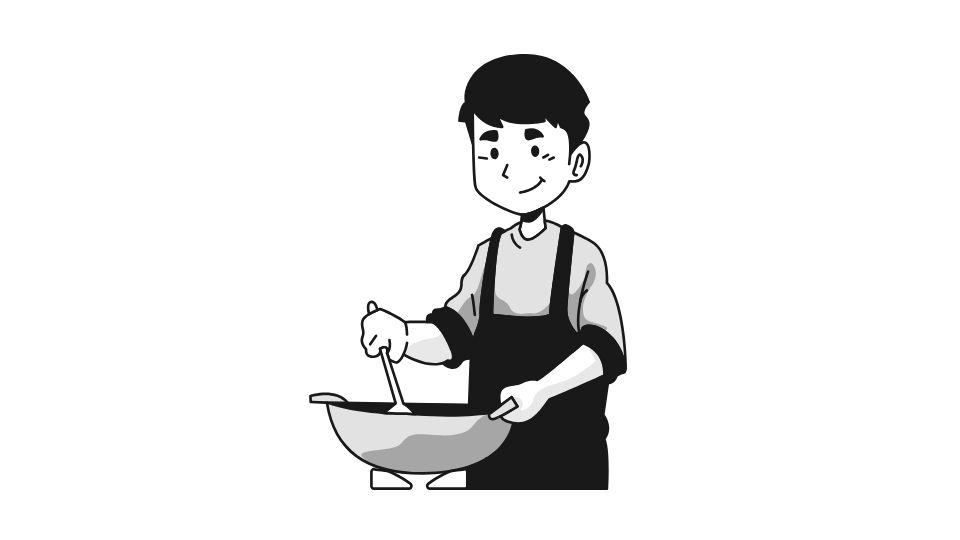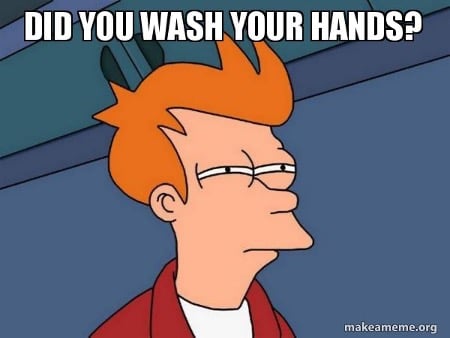Can Food Workers Return to Work After Washing Hands in the Bathroom?

Ever wondered what’s really going on when food workers wash their hands after using the bathroom?
It seems like a basic task we all do (hopefully), but in the food industry, there’s a whole science behind proper handwashing.
And for good reason – improper handwashing is a major cause of food-borne illness outbreaks. Yikes!
Let me break down what a food worker needs to do when coming back from the bathroom, why it matters, and how this simple act might be saving you from a very unpleasant weekend of digestive adventures.
The Right Way for Food Workers to Wash Hands After Bathroom Breaks
Think handwashing is just soap, water, and done? Think again! For food workers, it’s a carefully choreographed dance of cleanliness.
The 7-Step Handwashing Protocol Food Workers Must Follow

1. Use the Right Sink
Food workers can’t just wash their hands anywhere. They must use designated handwashing sinks that are separate from food prep sinks or dish-washing areas.
Why? Because cross-contamination is a real threat. You wouldn’t want someone washing their hands in the same sink where your salad ingredients are being rinsed, would you?
2. Get That Water Temperature Just Right
Not too hot, not too cold – food safety regulations recommend warm water around 100°F to 110°F.
The warm water helps the soap work better by loosening dirt and germs. Cold water just doesn’t cut it for killing those nasty microbes!
3. Soap Up Properly
A quick dab of soap isn’t enough. Food workers need to use enough soap to work up a rich lather covering all surfaces of their hands.
This isn’t just about appearances – the soap molecules actually trap bacteria and other contaminants so they can be rinsed away.
4. Scrub Like You Mean It
20 seconds minimum of thorough scrubbing is required. That’s singing “Happy Birthday” twice!
And it’s not just palms – food workers need to scrub:
- Between fingers
- Under fingernails
- Backs of hands
- Wrists
- Thumbs (often missed!)
- Knuckles and finger tips
5. Rinse Thoroughly
All that soap needs to come off completely under clean running water. Soap left behind can actually trap bacteria and cause skin irritation.
The running water carries away the soap along with all those loosened contaminants.
6. Dry Completely with Single-Use Towels
Wet hands are bacteria magnets! Food workers must dry their hands completely using single-use paper towels or air dryers.
Smart food workers use that paper towel to turn off the faucet and open the bathroom door, preventing re-contamination of their clean hands.
7. Avoid Touching Anything Dirty Before Returning
The final (and often forgotten) step is maintaining that cleanliness until they get back to their workstation.
Touching door handles, phones, or other potentially contaminated surfaces defeats the purpose of that careful handwashing!
When Food Workers Need to Wash Their Hands (It’s More Than You Think)

Bathroom breaks are obvious, but food workers actually need to wash hands after:
- Touching their face, hair, or body
- Handling raw meat
- Taking out trash
- Coughing or sneezing
- Handling money
- Changing tasks
- Using their phone (which carries more bacteria than a toilet seat in many cases)
Why All This Handwashing Matters So Much
You might be thinking, “Isn’t this overkill?” Not at all!
Studies show that proper handwashing can reduce food-borne illness risk by 30-40%. That’s huge considering the CDC estimates 48 million Americans get food-borne illnesses annually.
Many outbreak investigations trace back to poor hand hygiene. One contaminated hand can spread norovirus to hundreds of people through food handling.
Gloves Aren’t a Magic Solution

A common misconception: “If workers wear gloves, they don’t need to wash hands.”
WRONG!
Food workers still need to wash hands before putting on gloves and after taking them off. Otherwise, all they’re doing is creating “bacteria mittens” that spread germs everywhere.
What This Means For You

Next time you’re at a restaurant, take a moment to notice:
- Are there dedicated handwashing sinks?
- Do employees wash hands when changing tasks?
- Is handwashing signage posted?
These are signs of a food establishment that takes safety seriously.
And if you’re in the food industry, remember that your handwashing routine isn’t just following rules – it’s protecting people’s health and potentially their lives.
The 20 seconds you spend properly washing your hands might be the difference between a satisfied customer and someone spending their night hugging the toilet.
So wash up, food workers! Your clean hands are the first line of defense in keeping food safe for everyone.

